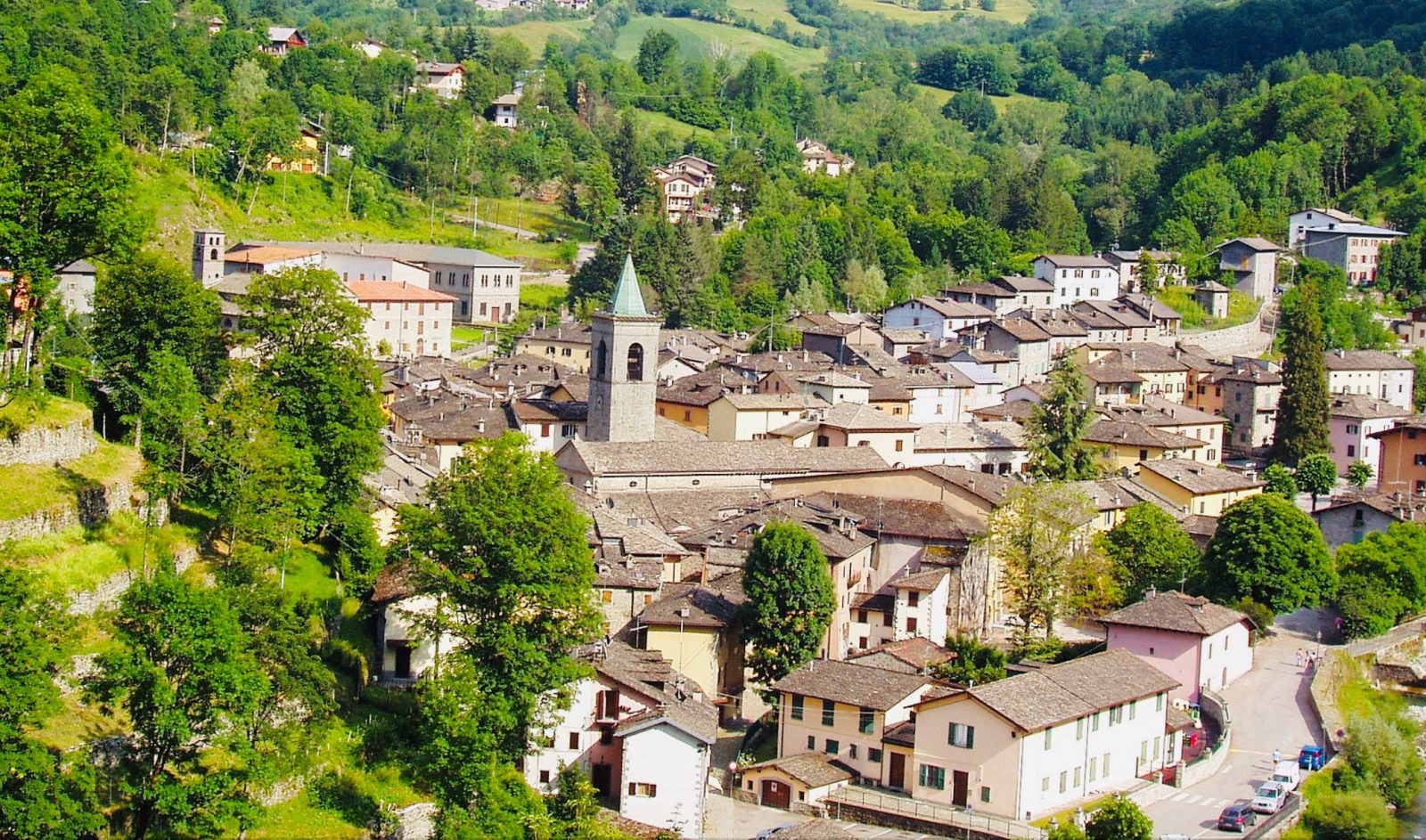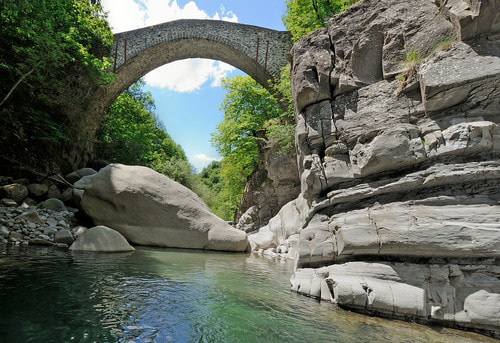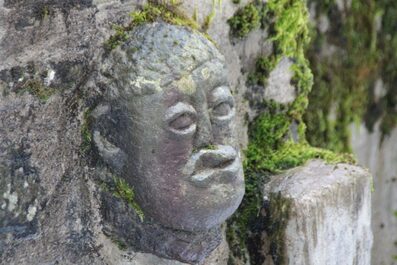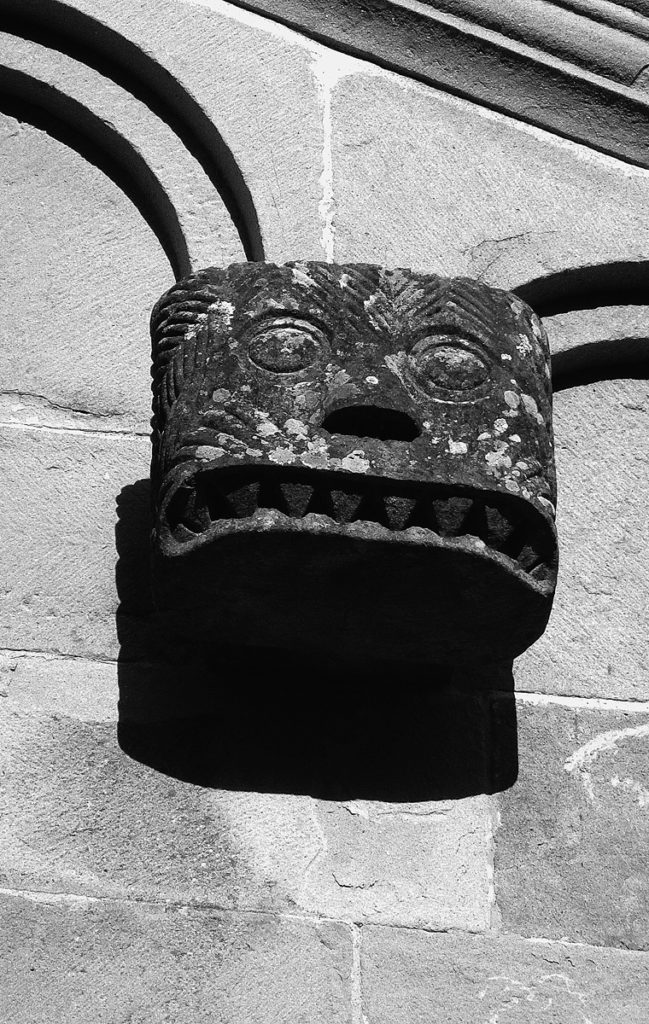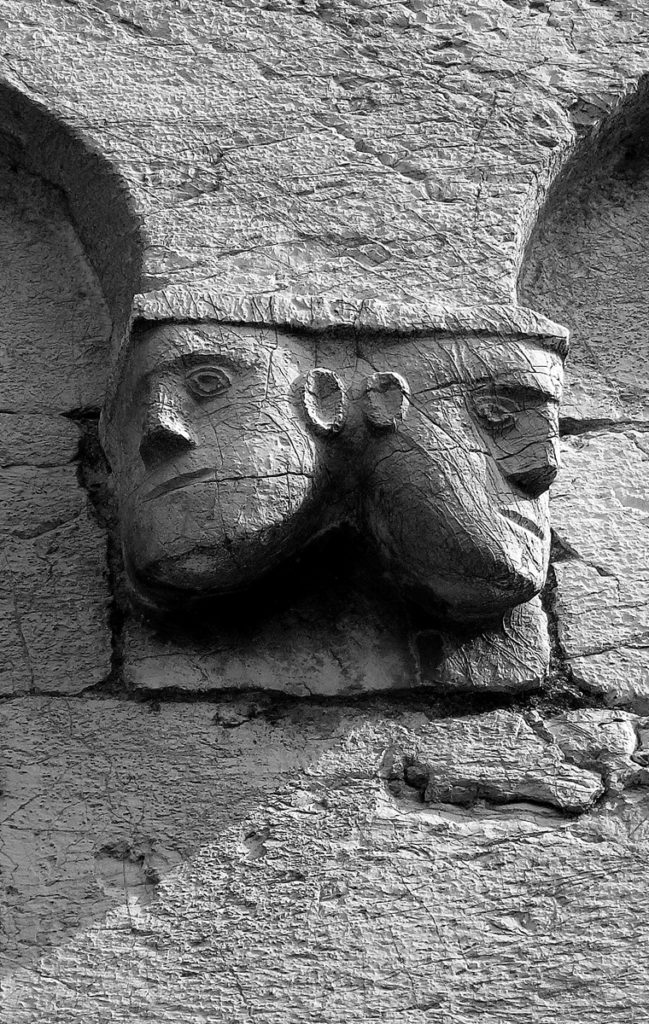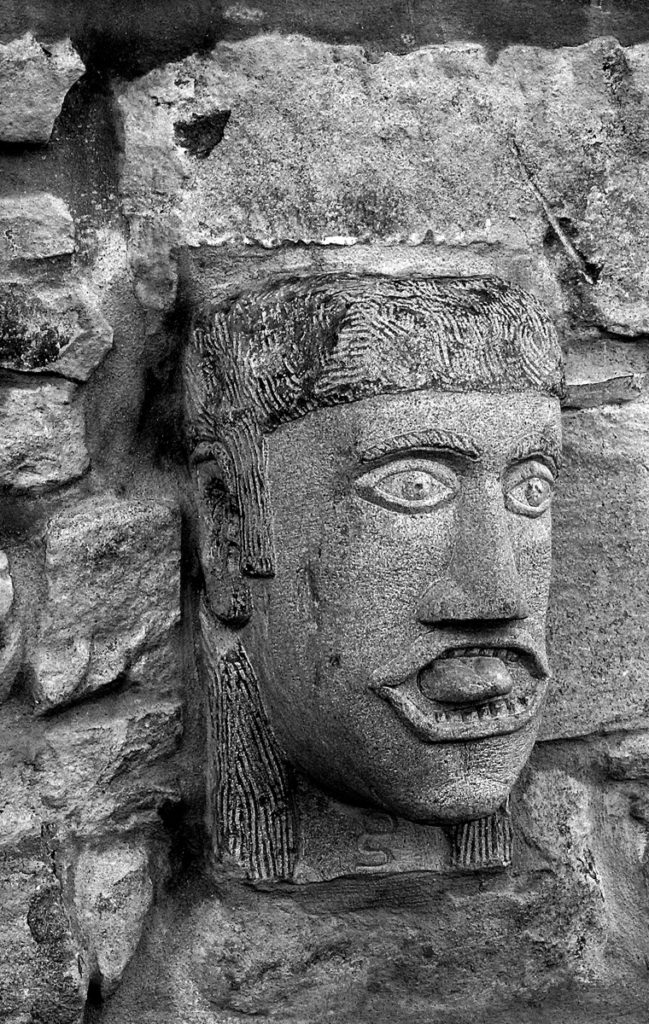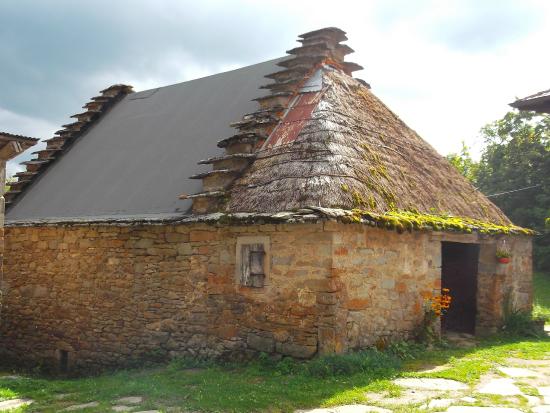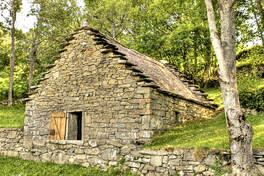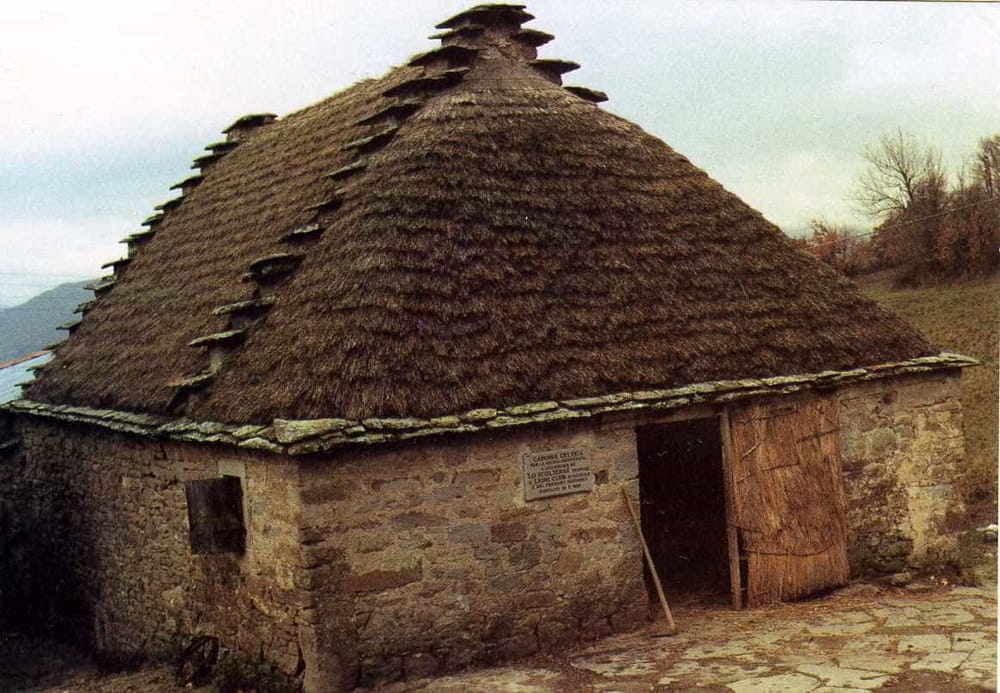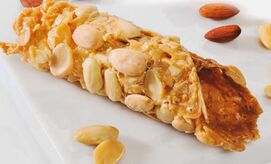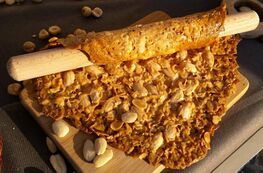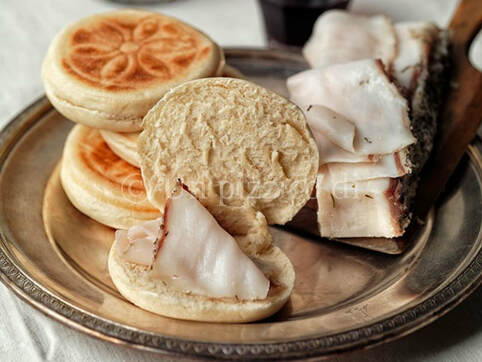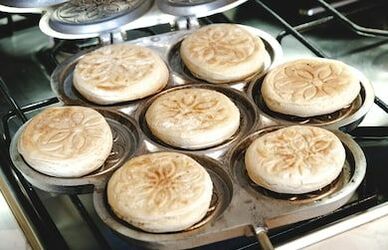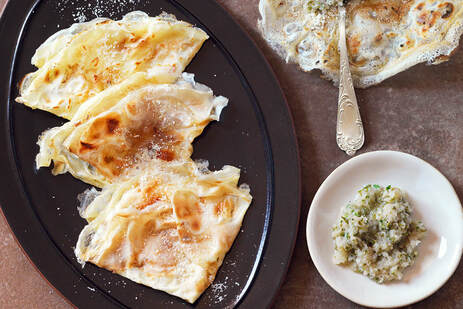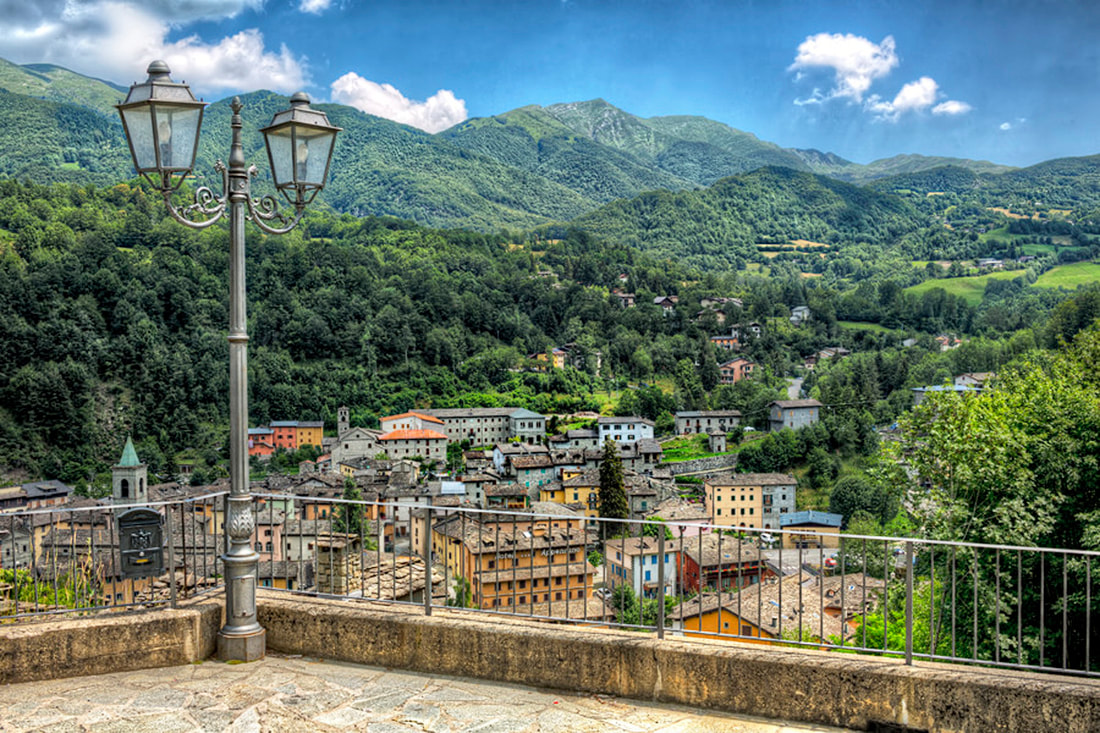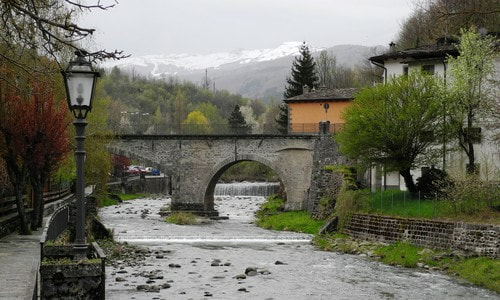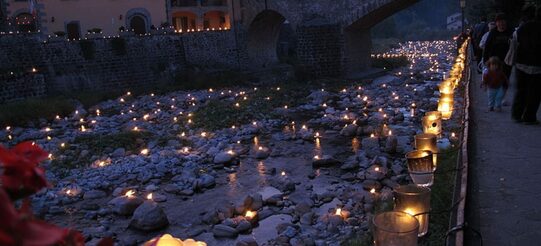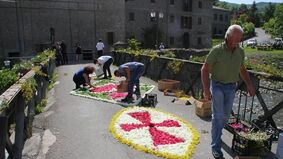Tucked into the pristine landscape of oak and beech trees, streams, meadows and stands of forest is the medieval village of Fiumalbo in the Italian region of Emilia-Romagna. It’s located about 70 kilometers southwest of Bologna and about 60 kilometers southwest of Modena. Fiumalbo’s name evolves from the Latin, flumen album (White River), with reference to the two winding rivers that surround the village. The lands around the village are dotted with ancient Celtic stone huts, medieval places of worship and the most significant draw to the area: the natural environment.
A dense network of well-marked trails follow old donkey paths, then used by shepherds and pilgrims, and now traversed by hikers, horseback riders and mountain bikers. In addition, the proximity of modern ski resorts is a real bonus in winter. The streams are a destination for fly fishermen. In the vicinity, the nearly 40,000-acre Frignano Park sets the tone with its impressive natural beauty.
The little borgho (village) even has the credentials to prove their beauty, being a member of the Borghi più belli d’Italia association and having been awarded the Italian Touring Club Orange Flag status.
Pistoia is just 7 miles or so over the Abetone pass, helping to unify the 1,200 or so borghi. The common local dialect, due to the proximity of the border of Liguria and Tuscany, also helps knit together many of the local customs. The highest peaks of the Modena Apennines are here: Mount Cimone (2165 m) on one side, and Mount Lagoni (1962 m) on the other.
The spirit of the Celts are here, too. Not only in the forests, but on the houses of the region. Strange and mysterious, carved stone faces called marcolfe (mummies) are found throughout the region. The symbol of the wolf and talismans of Celtic culture supposedly ward off the malocchio (evil eye).
Celts came to Italy in the fourth century BC and left their mark in the region, evidenced by the Celtic stone huts similar to those found in Ireland and Scotland. Some examples–a few with rye grass roofs–can be found in the village of Valdare and along the road from Fiumalbo to the foot of Mount Cimone.
The cuisine of the region is a mix of both Emilia and Tuscany with tortellone filled with ricotta, black cabbage soup, and a traditional sliced beef dish. Borlenghi, a paper thin crepe similar to carasau from Sardinia, is another traditional dish, stuffed with bacon and salami. Then there is tigelle, a stamped bread embossed with a Celtic rose, indicating its origin.
Main courses feature what comes from the forest–mushrooms and game, accompanied by polenta. Their prideful dessert is the Croccante, invented in Fiumalbo, including natural ingredients such as chestnut honey, white almonds, sugar and caramel.
So, tear up your Must-see List for Italy, and visit one of Italy’s small towns…there is a lot to do here:
Fiaccolata di Carnevale
February: on the night before Ash Wednesday, there is a parade through the village with people carrying birch torches, even torches lighting the stream. The flames signify giving up the coldness and hardships of winter, and looking forward to a fruitful spring and summer.
Infiorata del Corpus Domini
Flower Festival on the the Sunday of the Corpus Domini procession through the streets with large, intricate floral carpets created by the inhabitants.
Fiera di Luglio
A sagre (food festival) on the second Sunday of July: food stands and stalls selling local produce, cheese, wine, etc.
Festa di San Bartolomeo
August 23: Feast of St. Bartholomew, the patron saint of the village. The village is illuminated with torches and candles, and even candles lighting the stream. A saint is accompanied in procession by the brotherhoods of the Whites and the Reds, wearing traditional costumes and carrying ancient banners. The festival ends with fireworks.
Presepe Vivente
A living nativity, December 24, biennial. People are dressed in the clothes of their ancestors, carrying out traditional crafts. The highpoint is the Wise Men on horseback following a path lit by torches that winds through the old town and leading to the Nativity scene, and the Christ child.
Make the pledge and become a member of Italian Sons and Daughters of America today

